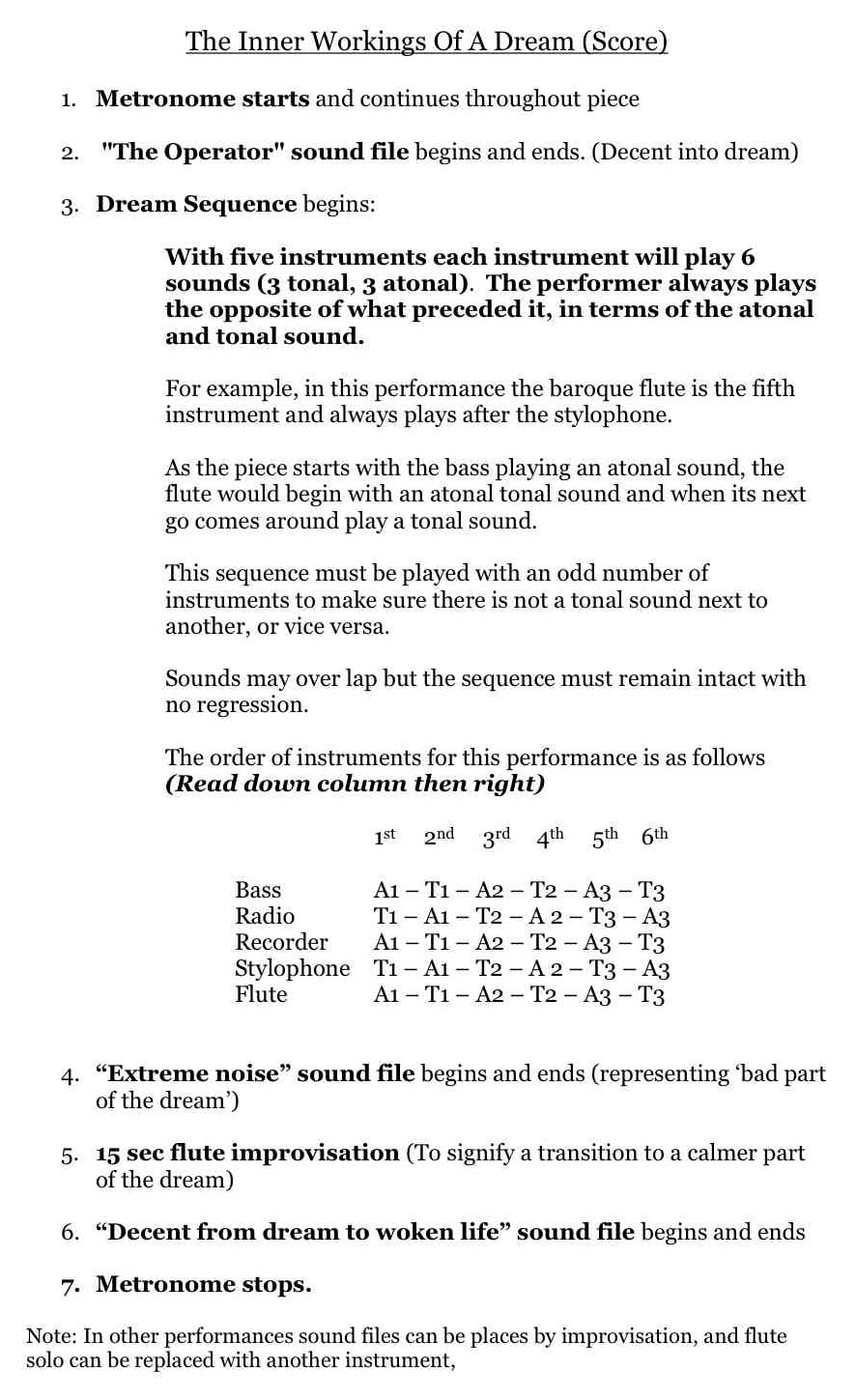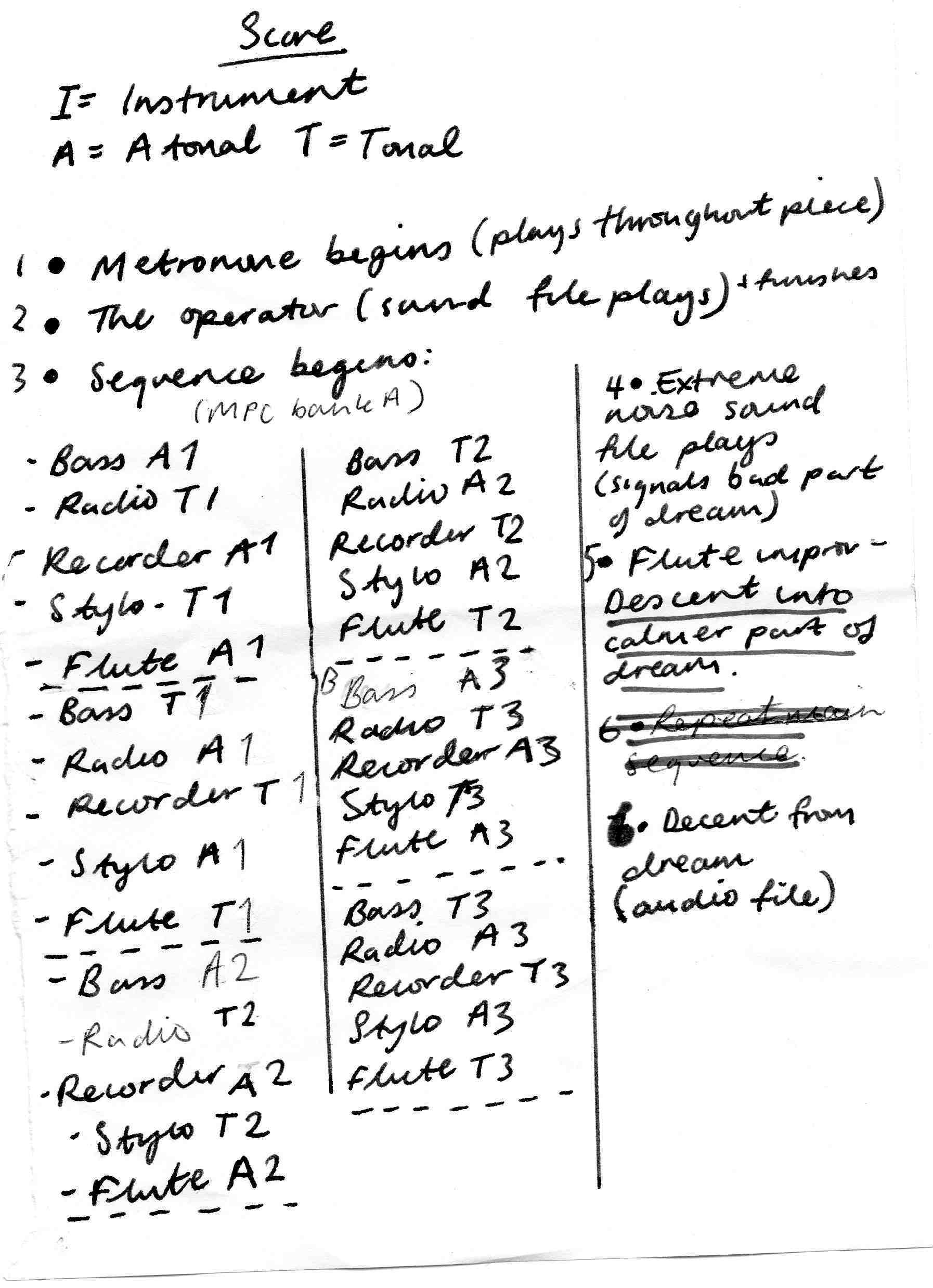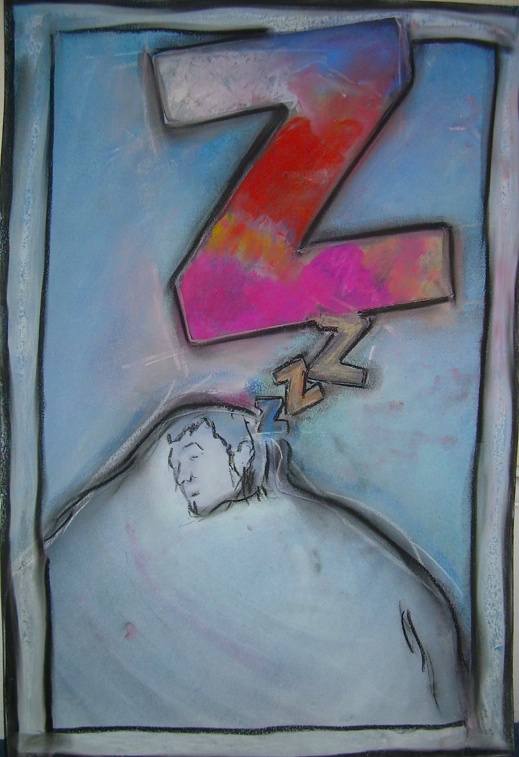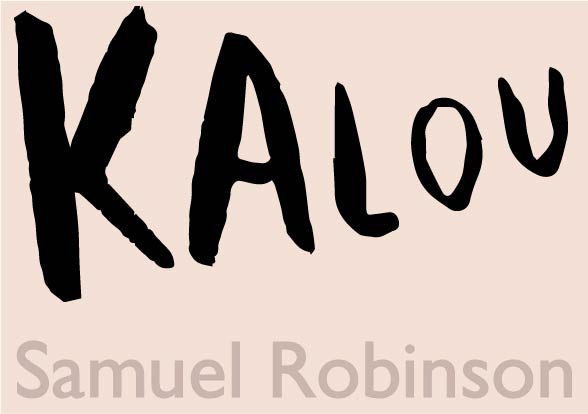| updates • me • highlights • music • radio • podcast • film • working to work |
The Inner Workings Of A Dream [2008]
Second live performance
Live performance with Stephen Preston on the baroque flute
“Sanity is a madness put to good uses; waking life is a dream controlled.” - George Santayana
With this piece I was aiming to replicate sonically the strange unpredictable nature of a dream, how one never knows what is around the corner, when people and situations collate in ways they wouldn't in waking life.
In order to express this, a number of methods were used including not specifying which instruments should be used, the quantity of instruments and the duration of time each should play. At first I planned to include a dream sequence as part of a piece that would encompassed the whole sleep experience, but decided it would be better to focus solely on the R.E.M. stage. I wanted the score to be conceptually solid but also to allow for improvisation.

There are five instruments for this performance of the piece, and they each take it in turn to make each make sound. The order of instruments is important but the sounds can overlap each other. The crux of the piece is the dream sequence, in the which the instruments take it in turn to play atonal or tonal sounds (perhaps harmonic and non-harmonic is a more fitting description). The atonal sounds represent the strange, unusual parts of the dream and the tonal sounds, the logical.
Due to a lack of time (and practicality), I wasn't able to perform with four other musicians or solo, so I spent time recording and editing a number of sounds myself using the instrumentation listed above in part three and then importing the sounds into an MPC sampler/sequencer. Using the MPC enabled me to manipulate in real-time the panning, pitch and level of the sounds.

As I developed the piece, it became apparent that many of the atonal sounds I'd recorded could be classed as tonal and vice versa. I decided addressing this it wasn’t critical to the piece as it's the disparate nature of the sounds, not the definition of tonality that's the basis of the piece.
I also composed and recorded three short pieces that would represent different transitional parts of the dream. These are also triggered and manipulated live using the MPC. In other performances musicians could improvise the sections where I have recorded short pieces. In addition to a written score, I drew a graphic score. The intention of this was that the performers should interpret the colours in the big 'Z' (going from bottom right and up) and play their instruments in the dream sequence accordingly.

The metronome is a constant throughout the piece and could be replaced by any percussion. It is included to represent both the passing of time, and the consistency and 'normality' of real world while one dreams.
Dream Elements
'Descent into Dream '
'Bad Dream'
'Ascent From Dream'
Additional Piece
In preparation for this project, I composed a short piece based on a quote by Jean Cocteau.
“Asking an artist to talk about his work is like asking a plant to discuss horticulture”
There is no further explanation for this piece.
